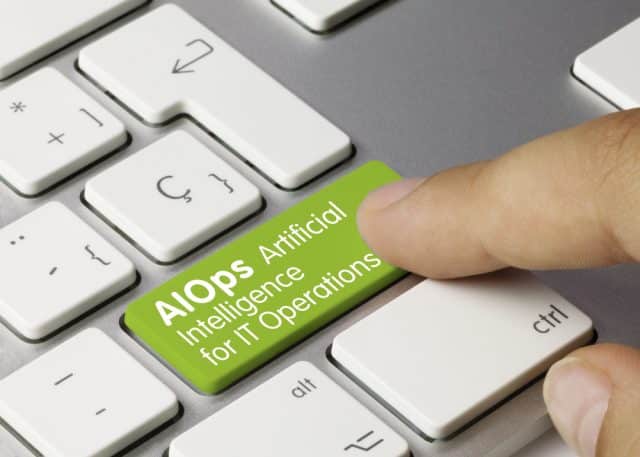Modern AIOps doesn't just fix outages -- it prevents them

Is your business one accidental click away from a major outage? We saw it happen with Atlassian earlier this year. You may already have an incident management strategy and monitoring, but is it adjusted for the ever-changing IT infrastructure and application architectures? Putting appropriate protocols in place ensures that one human code push can't shut down an entire system for three weeks.
Legacy monitoring tools for IT teams were helpful with older, monolithic infrastructures. When we had static infrastructures, finding a direct correlation between the incidents and applications was much easier. Eventually, signals needed even faster processing, but legacy tools couldn’t keep up.
DevOps’s rapid growth over the last decade and infrastructure’s accelerating evolution revealed that this strategy must adapt. Infrastructure environments are constantly changing with containers, microservices and other new applications, dramatically increasing the complexity and fragility of systems. In fact, 42 percent of tech leaders correlate these factors to increased complexity in IT systems. And adding more components makes downtime more frequent and more difficult to resolve.
Customer expectations have also impacted the modern IT landscape. People rely heavily on a medley of digital applications to work and play. When digital applications or services crash, organizations sometimes face penalties that increase by the minute. An inability to meet standards negatively impacts sales and brands.
Enter AIOps: a solution designed to detect incidents and improve downtime by prioritizing critical events and learning from previous incidents to quickly get applications up and running.
Why AIOps of old no longer cuts it
Simply detecting events isn’t enough in today’s digital-first economy. Once systems detect an anomaly in the data, it’s too late. Instead of prevention, IT teams using legacy monitoring tools can only focus on mitigation. And the impact doesn’t go unnoticed by users.
As customer expectations rise, companies have increasingly narrow service level agreements (SLAs). But IT teams trying to keep incidents at bay and increase availability are hard-pressed to meet these targets. Adding legacy monitoring tools to stacks isn’t an effective solution. Information becomes siloed and it’s harder to track down the solution. And as companies add legacy monitoring tools to their tool stacks, the more they need to piece together this siloed information. Teams will spend the majority of their time monitoring just to find the right solution. In short, AIOps solutions must adapt -- not just for users' sake, but to prevent IT team burnout.
Preventing outages from the start
Modern AIOps solutions detect problems before they become critical and affect the end user. These solutions use machine learning (ML) to identify patterns leading to an incident and prevent them from happening again. To detect an incident, modern AIOps doesn’t just ingest event data like the AIOps of old. It includes metrics, traces and logs to provide a clearer picture and early warning signs of problems. Modern AIOps is a holistic solution, and by merging many capabilities and analyzing the data ingested, can eventually become the only necessary monitoring tool teams need.
The most significant focus of modern AIOps is availability. By unifying data into one tool, AIOps helps engineering teams decrease the number of tools needed for monitoring. IT teams can get a holistic picture of the system by looking at just one screen, increasing visibility and improving availability.
Companies prepare their Mean Time to Resolution (MTTR) targets to provide the best customer experience, and to do so, modern AIOps tools are the key to staying on track. It creates more organized and detailed incidents through data ingestion and correlation, consolidating alerts. When AIOps gives more context to an incident, teams responsible can fix it quickly. Automated knowledge capture preserves information and lessons learned from past resolutions which provides and additional resource for finding solutions to resolve new and future incidents.
Regardless of how early an organization adopts AIOps, the original incident monitoring strategy must evolve to keep users safe and at ease. Companies can no longer afford to lose their reputation and customers due to one wrong click causing days of downtime.
Image credit: Momius/depositphotos.com

Chris Boyd is an experienced engineering leader, observability fanatic and loves to challenge the status quo. Driven by improving the lives of fellow technologists when working with Observability products, he takes pride in the teams he builds and the innovative solutions they develop together. You may know him from his work as the Direction of Site Reliability Engineering at GoDaddy from their early days to their successful IPO launch. He currently resides in Mesa, AZ, and is VP of Engineering for Moogsoft, a leader in AI and Service Assurance.